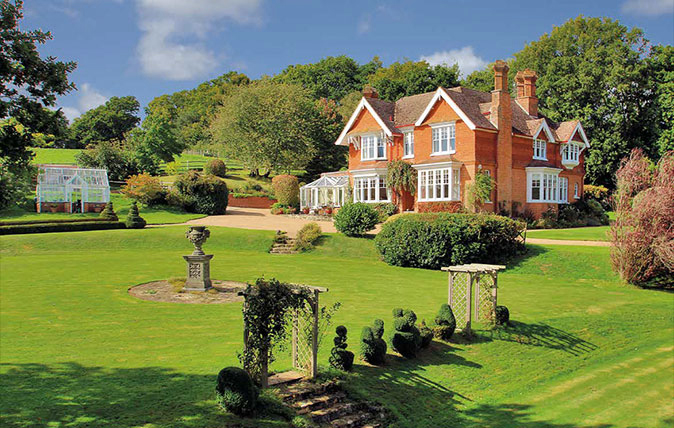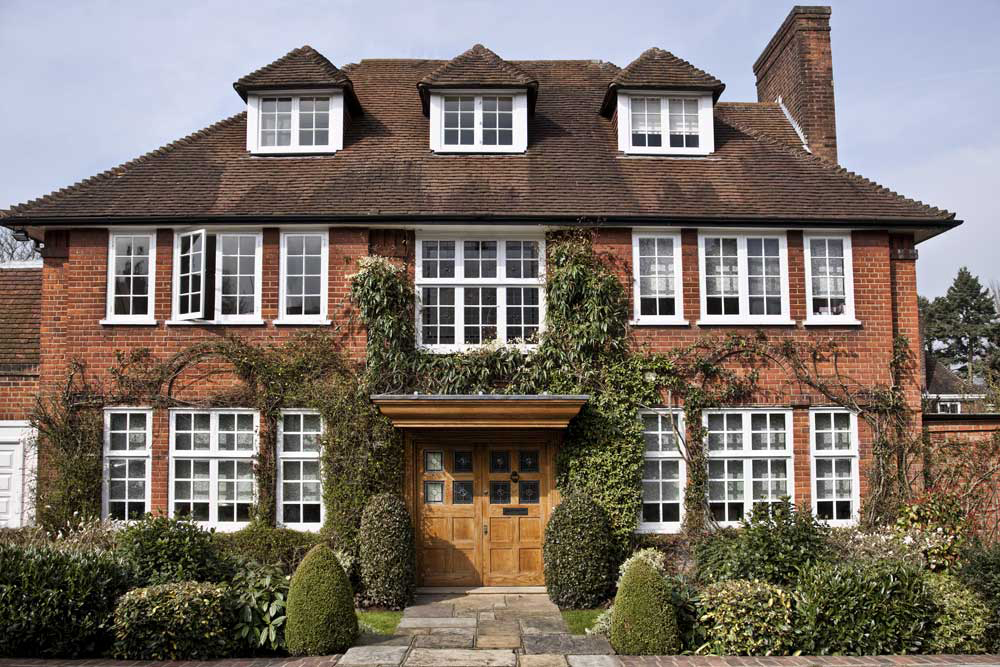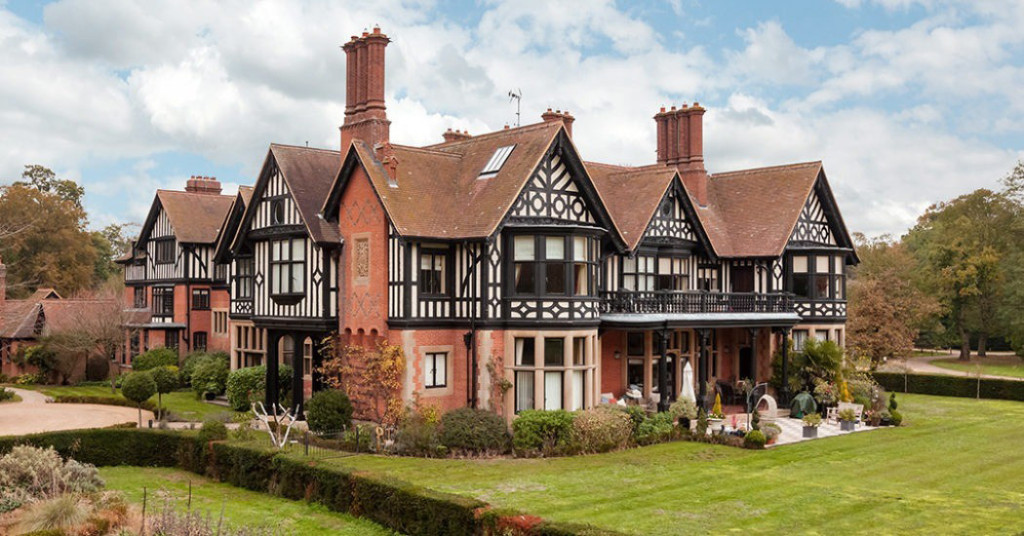Introduction – Edwardian Architecture
Edwardian Architecture is the building style that was common in the Assembled Realm and its states during the rule of Lord Edward VII, from 1901 to 1910. It is described by its diversity, drawing on components of different verifiable styles, including Renaissance, Extravagant, and Expressions and Artworks. Edwardian architecture is additionally known for its utilization of excellent materials and craftsmanship, as well as its accentuation on solace and comfort.
Characteristics of Edwardian Architecture
Edwardian architecture is described by various key highlights, including:
- Eclecticism: Edwardian architects drew on components of different authentic styles, including Renaissance, Extravagant, and Expressions and Specialties. This mixture is clear in the variety of Edwardian structures, which range from fabulous ranch style homes to exquisite apartments to business and public structures.
- Utilization of excellent materials and craftsmanship: Edwardian draftsmen utilized great materials, like block, stone, and record, in their structures. They additionally gave close consideration to craftsmanship, bringing about all around constructed and strong designs.
- Emphasis on comfort and convenience: Edwardian architects were concerned with creating comfortable and convenient living spaces. This is evident in the design of Edwardian homes, which typically featured spacious rooms, modern amenities, and easy access to outdoor spaces.

Key Figures in Edwardian Architecture
The absolute most remarkable Edwardian draftsmen include:
- Sir Edwin Lutyens: Lutyens is generally viewed as one of the best English draftsmen ever. He was liable for planning various notable Edwardian structures, remembering the Emissary’s Home for Delhi and the Cenotaph in London.
- Sir Herbert Baker: Baker was another leading Edwardian architect. He is best known for his work on the Union Buildings in Pretoria, South Africa, and the Australia House in London.
- Detmar Blow: Blow was a prominent Arts and Crafts architect. He designed a number of beautiful Edwardian homes, including Lindisfarne Castle and Standen House.
- Francis William Troup: Troup was a Scottish architect who specialized in the design of commercial and public buildings. He designed a number of notable Edwardian buildings in Glasgow, including the Daily Record Building and the Mitchell Library.
Iconic Edwardian Buildings
The absolute most notorious Edwardian structures include:
- The Lutyens’ Delhi: The Emissary’s Home in Delhi, presently known as Rashtrapati Bhavan, is quite possibly of the most amazing Edwardian structure on the planet. It was planned by Sir Edwin Lutyens and finished in 1929. The structure is a show-stopper of Indian-roused design and is viewed as perhaps of Lutyens’ best work.
- The Thoor Ballylee: The Thoor Ballylee is a pinnacle house in District Galway, Ireland, that was planned by William Head servant Yeats and finished in 1916. The Thoor Ballylee is a unique example of Edwardian architecture that reflects Yeats’ interest in Irish mythology and folklore.
- The Daily Express Building: The Daily Express Building in London is a striking example of Art Deco architecture. It was planned by Sir Edwin Lutyens and finished in 1931. The structure is known for its particular exterior and its utilization of imaginative materials and development methods.
- The Regal Liver Building: The Regal Liver Structure in Liverpool is a Grade I recorded building that is viewed as quite possibly of the most notable milestone in the city. It was planned by Walter Aubrey Thomas and finished in 1911. The structure is known for its unmistakable arches and its utilization of great materials and craftsmanship.
Evolution of Edwardian Architecture
Edwardian architecture evolved from the architectural styles that were popular in the Victorian era. Victorian architecture is portrayed by its fancy and diverse style, while Edwardian design is more limited and rich. Edwardian draftsmen likewise utilized new materials and development procedures, for example, built up cement and steel outlines.
Edwardian architecture transitioned into later architectural movements, such as Art Deco and Modernism. However, many Edwardian buildings are still standing today and continue to be admired for their beauty and craftsmanship.
Edwardian Architecture Worldwide
Edwardian architecture is not only seen within The United Kingdom. It’s additionally noticeable across the globe including Australia, Canada, India and South Africa. This is on the grounds that there was a period when the English Realm was at its top during the Edwardian time frame, too. British architects were sought-after across the globe.
The Interior Design of Edwardian Buildings
The inside style of Edwardian designs is recognized by the utilization of top-quality materials like marble, wood and glass. Edwardian planners likewise gave cautious consideration to the littlest subtleties, bringing about modern and rich insides.
Some of the key features of Edwardian interior design include:
- Furniture: Edwardian furniture is typically made of high-quality wood, such as mahogany and oak. It is often characterized by its simple and elegant lines. Popular Edwardian furniture items include Chesterfield sofas, wingback chairs, and pedestal tables.
- Decor: Edwardian decor is typically understated and elegant. Popular Edwardian decorative items include paintings, sculptures, and vases. Edwardian designers also made use of natural elements, such as flowers and plants, in their interiors.
- Use of color: Edwardian designers typically used light and pastel colors in their interiors. This created a bright and airy atmosphere. Popular Edwardian colors include white, cream, yellow, and blue.
- Lighting: Edwardian lighting is typically elegant and sophisticated. Popular Edwardian lighting fixtures include chandeliers, sconces, and table lamps. Edwardian designers also made use of natural light in their interiors, using large windows and skylights to let in as much sunlight as possible.
Edwardian Architecture in Modern Times
Edwardian architecture is still admired today for its beauty and craftsmanship. Numerous Edwardian structures are as yet standing and are utilized as homes, workplaces, and public structures. There has likewise been a recovery of interest in Edwardian architecture as of late. This is expected to some extent to the ubiquity of network shows and motion pictures that are set in the Edwardian time, for example, “Downton Convent” and “The Ruler’s Discourse.”
The Social and Cultural Impact
Edwardian architecture was an impression of the social and social changes that were occurring in the Edwardian period. The Edwardian period was a period of incredible thriving and monetary development. It was likewise a period of social change, as the working class filled in size and impact. Edwardian architects were influenced by these social and cultural changes. They designed buildings that were both comfortable and stylish, and that reflected the aspirations of the Edwardian middle class.
Reactions and Controversies
Edwardian design has been condemned for being excessively fancy and showy. A few pundits have likewise contended that Edwardian designers were too centered around making structures that were trendy and in vogue, as opposed to structures that were utilitarian and solid.
Nonetheless, Edwardian design is likewise appreciated for its magnificence and craftsmanship. Edwardian designers utilized top notch materials and development strategies, and they gave close consideration to detail. This brought about structures that have endured for an extremely long period.
Edwardian Architecture in Pop Culture
Edwardian design has been highlighted in various famous movies and TV programs, including:
- Downton Abbey: Downton Nunnery is an English TV series that is set in the Edwardian time. The show includes various notorious Edwardian structures, including Highclere Palace and Wentworth Woodhouse.
- The Lord’s Speech: The Ruler’s Discourse is an English verifiable show film that is set in the Edwardian period. The film includes various notorious Edwardian structures, including Buckingham Castle and Westminster Nunnery.
- The Crown: The Crown is an English verifiable show TV series that follows the rule of Sovereign Elizabeth II. The show includes various famous Edwardian structures, including Buckingham Castle and Clarence House.
The Economic Aspect
Edwardian architecture can be costly to fabricate and keep up with. Notwithstanding, Edwardian structures can likewise be an important resource for a local area. They can draw in travelers and organizations, and they can assist with making a feeling of spot.
Edwardian Architecture and Sustainability
Edwardian architecture can be feasible in various ways. For instance, Edwardian structures are much of the time all around constructed and strong, and that implies that they can keep going for a long time. Edwardian structures likewise frequently include energy-productive elements, like high roofs and enormous windows.
However, Edwardian buildings can also be unsustainable in a number of ways. For example, Edwardian buildings often use a lot of energy to heat and cool. Edwardian buildings also often feature materials and finishes that are not sustainable, such as lead paint and marble.

The Future of Edwardian Architecture
The fate of Edwardian architecture relies upon various variables, including the expense of support and the interest for Edwardian structures. Notwithstanding, Edwardian design is probably going to stay famous for a long time to come. Edwardian structures are lovely and very much constructed, and they offer a remarkable look into the past.
Trends and Innovations
There are various patterns and developments that are forming the fate of Edwardian architecture. One pattern is the utilization of new materials and advancements to reestablish and protect Edwardian structures. For instance, engineers are presently involving 3D printing to make new parts for Edwardian structures that are as of now not accessible.
Another trend is the use of Edwardian architectural elements in new buildings. For example, some architects are now designing new buildings that feature Edwardian-style facades.
Challenges Ahead
Perhaps of the greatest test confronting Edwardian design is the expense of upkeep. Edwardian structures are frequently costly to keep up with, and this can be quite difficult for land owners.
Another challenge is the demand for Edwardian buildings. Edwardian buildings are in high demand in some areas, such as major cities. Be that as it may, in different regions, there is less interest for Edwardian structures. This can make it hard to track down purchasers for Edwardian structures, and it can likewise prompt Edwardian structures being annihilated.
Conclusion
Edwardian architecture is a delightful and exquisite style of architecture that is as yet respected today. Edwardian architecture can be tracked down in numerous nations all over the planet, and they are a famous vacation destination. The fate of Edwardian design is unsure, however it is probably going to stay famous for a long time to come.
FAQS
What Defines Edwardian Architecture?
Edwardian architecture, taking inspiration from the reign of King Edward VII (1901-1910), boasts a fusion of design elements. Bursting with creativity, it melds the aesthetics of the late Victorian era and the Art Nouveau movement. Edwardian buildings are often characterized by asymmetrical facades, decorative brickwork, and distinctive gables.
How Does Edwardian Architecture Differ from Victorian Architecture?
Edwardian architecture, in all its splendor, is a departure from the heavy ornamentation of the Victorian era. While Victorian buildings embraced dark and elaborate designs, Edwardian structures favor a lighter, more whimsical aesthetic. The burst of creativity in this era results in a focus on simplicity and elegance, with an emphasis on natural light and open spaces.
What Materials Were Commonly Used in Edwardian Architecture?
Builders in the Edwardian era were quite resourceful, opting for a diverse range of materials. These included red or yellow bricks, white-rendered facades, terracotta, and timber. This eclectic mix created a unique burst of textures that added character to Edwardian structures.

